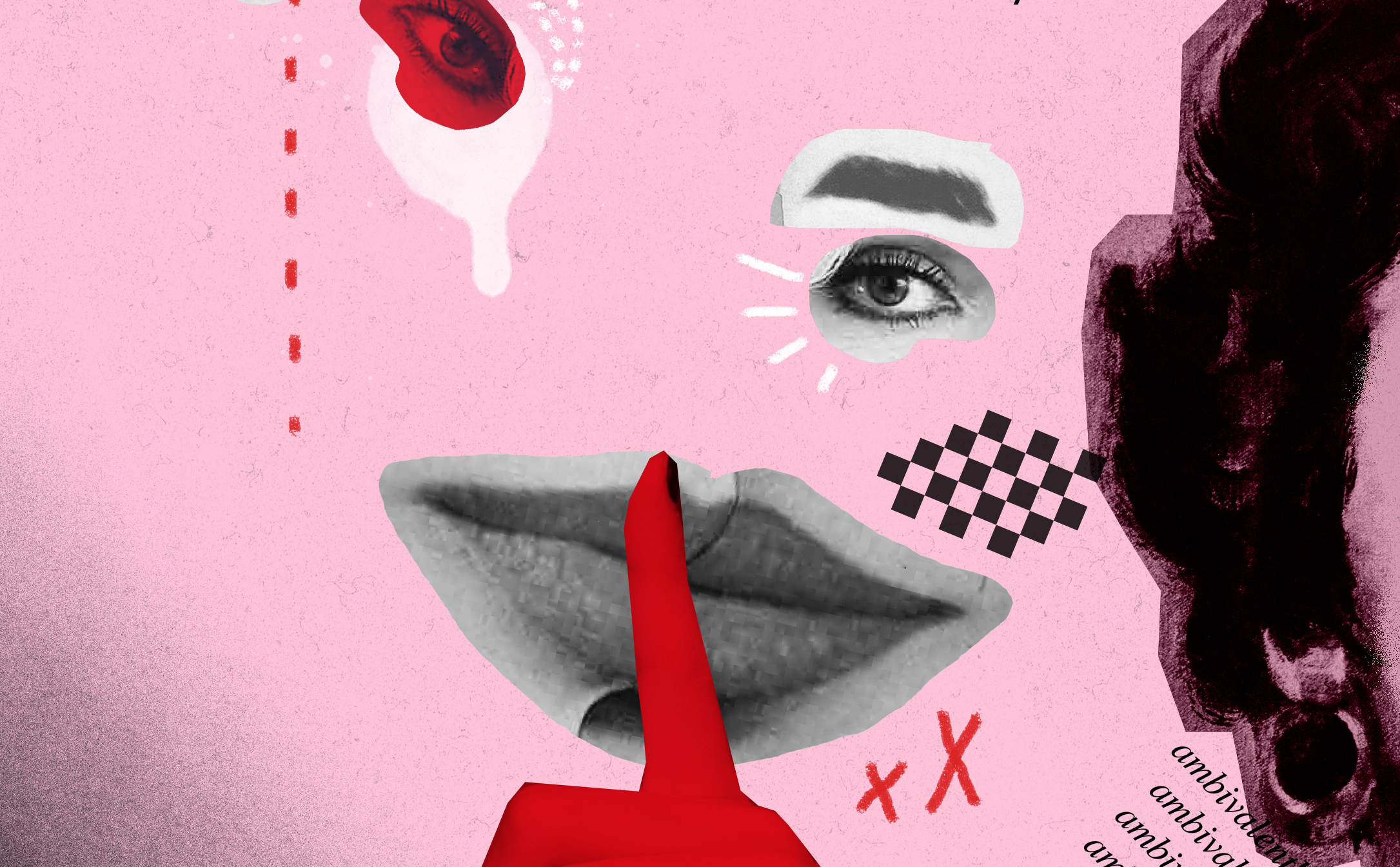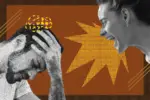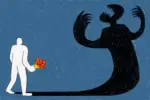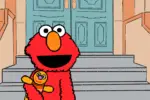There’s an illustration floating around on Tumblr of a set of feminine facial features — wide eyes, button nose, cherubic lips — sketched onto a baby pink background. Written over the face is the phrase “His opinion does not define you.” Click on the artist’s credit on the bottom of the post and you’ll be rerouted to a Tumblr account called Ambivalently Yours. Theme: pink. Bio: “I can’t always make up my mind, but I am boldly undecided (feminist rants/ questionable advice/ too much pink).” Content: decidedly feminist … possibly even subversive?
The artist’s Instagram boasts the same content, a similar bio and almost 60,000 followers. Scroll down the page and you’ll find a drawing of a double-headed girl, the faces similar but not exact: “It confused you that I was both delicate and full of fury.” A girl with orange lips and pom-poms for hair: “My softness is my armour.” A braided and banged girl with a hole by the side of her mouth: “I’m tenderly angry and cautiously hopeful.” All pink, pink, pink.
Ambivalently Yours is the artist behind this “feminist practice,” this ode to the complexity of girlhood and the countless manifestations of femininity.
Her profile picture is a figure in a pink hoodie zipped all the way up to the throat, hood drawn up over a face that’s covered in pink hair. Ambivalently Yours has decided to remain anonymous, but she isn’t hiding behind her facelessness — she’s using it.
Anonymity isn’t the only trademark of the artist; many of AY’s pieces deal with the dichotomy between soft and strong and the possibility that both can exist simultaneously in all women. That duality makes itself known throughout her entire gallery of work; the above-mentioned illustration of the double-headed girl is a perfect example (“It confused you that I was both delicate and full of fury”).
AY’s art is made by a woman, for women and inspired by women. It really is a team effort backed by femininity and made possible by the individual experiences of women. Each piece is a reminder that girls occupy space, and complex thoughts and emotions occupy girls.
And Ambivalently Yours is nowhere near done. In addition to Season 2 of her podcast, Rebelliously Tiny, which will premiere later this summer, she is always producing work. As long as a girl has a story to share, AY will be there to sketch it out in pink and strength and softness.
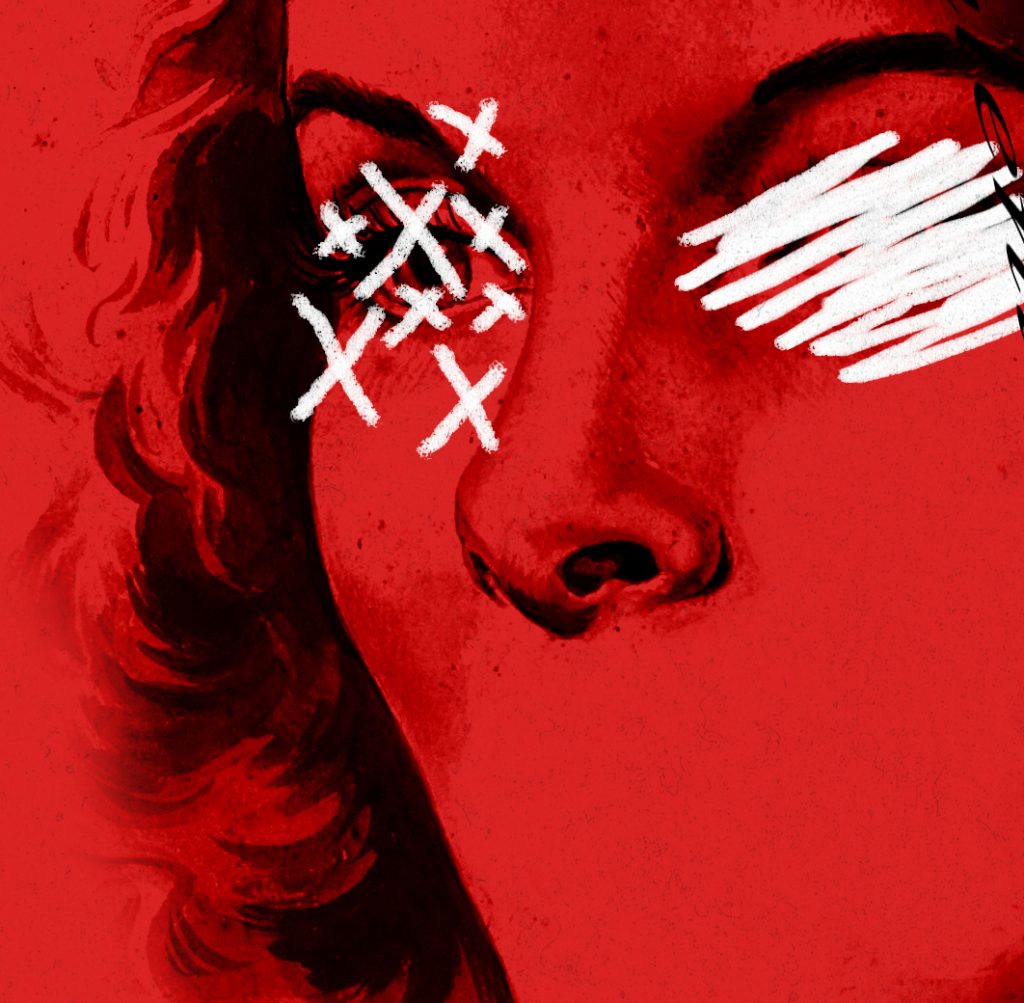
Cameron Andersen: Which pronouns do you go by?
Ambivalently Yours: She/Her
CA: Could you please start with giving just a bit of background on the work you create and why you started the “Ambivalently Yours” account?
AY: I first started my feminist practice as Ambivalently Yours in 2011 when I was studying feminist art while working in the fashion industry, which seemed like a huge contradiction. At work, I became the feminist killjoy every time I raised a concern about the sexist undertones in our campaigns, and in art school I was the fashion girl who many assumed was duped by the patriarchy just because I was drawn to softness and feminine colors.
I felt caught somewhere in-between two worlds that I both loved and hated; in other words, I felt ambivalent. Eventually, I decided to embrace my contradictions. Ambivalently Yours became my braver alter ego, giving me a way of exploring my feminist questions from this in-between place where things are undefined and pink can be powerful.
CA: Why are you “ambivalent?”
AY: Ambivalence means the co-existence of conflicting emotions, like loving and hating something at the same time. To me ambivalence is the word I use to describe how I feel about most things. By embracing ambivalence I’m giving myself permission to have complicated opinions. To quote Rebecca Solnit from the book “Hope in the Dark: Untold Histories, Wild possibilities”: “The answer to most either/ or questions is both; the best response to a paradox is to embrace both sides instead of cutting off one or the other for the sake of coherence.”
CA: How would you compare the podcast platform to the Instagram platform? Have you found that one suits your needs better?
AY: Instagram in a good place to share quick thoughts and emotions through simple drawings. Podcasting is a more long-form medium where I can explore more complicated ideas that benefit from being approached more slowly and carefully. To me, both mediums are complementary.
CA: Have you had any gratifying interactions with fans of your work?
AY: I’ve met so many of my friends and collaborators through sharing my art online. But really, any day that anyone writes to me to tell me that they saw my work and know exactly what I mean is a good day. To me art is a language, so when you find other people who understand that language, it’s very gratifying.
CA: Is there a specific piece of yours whose creation really impacted you?
AY: In 2015, I was invited to do a three-month residency at the Centre for Contemporary Arts in Glasgow. During my time there I tried to respond to as many of the messages that people wrote to me online as I could with drawings. I made a hundred drawings and answered hundreds of messages. It was a really intense and overwhelming project, but it was also the first time that I really had the time and space to make work and think of myself as a “real artist.”
Making these pink drawings can feel so silly and unimportant sometimes, so doing it as a full-time job for three months was a huge gift and privilege. It really changed the way I valued what I do, and helped me convince myself that the things that many people think are silly can actually be important if we decide to treat them as so.
CA: Can you tell me the inspiration/story behind one of your pieces?
AY: The majority of my work is inspired by the messages that people write to me online, which I respond to with drawings (you see these exchanges on Tumblr), or more recently with my podcast Rebelliously Tiny.
CA: What do you hope your followers take away from your work?
AY: I make work to remind myself and others to embrace our complicated emotions and to hopefully help people (and myself) feel a little less alone.
https://www.instagram.com/p/Bm7cPoSBhP_/?taken-by=ambivalentlyyours
CA: Do you think your anonymity has informed your work or vice versa?
AY: I think that my anonymity has helped me be braver in my work, and it might have sometimes shielded me from some of the more volatile and violent aspects of the internet. It does sometimes also get in the way. It sometimes makes me feel a little too separate and compartmentalized from what I am doing. Like everything else, I have mixed feelings about it.
CA: In what ways are remaining anonymous crucial to your project?
AY: I’m not sure that it is crucial, it’s just what feels best right now. It might change, it might not.
CA: What self-care habits have you picked up? Is there one in particular that you find especially useful?
AY: I try to take social media breaks when I can. I place my phone far away from me when I’m eating a meal or working, so that I don’t start stress scrolling out of habit. I’m generally not great at self-care, it’s something I need to keep working on. I’m trying to get better at taking time off, resting more, moving more.
CA: Are your pieces inspired by people you know in real life?
AY: As I mentioned earlier, mostly my work is inspired by anonymous questions I get online, which I filter through my own personal experiences and interactions.
CA: Do you ever find that using a primarily pink color scheme limits you? How does it lend itself to your message?
AY: I don’t see it as a limit; I see it as a signature. All the drawings I post online are part of an ongoing series, so in a way they are all part of one big, never-ending art piece. By using the same pink I am linking them all together.
I decided to make all my drawings light pink because people kept telling me not to. The use of pink is actually my resistance against everyone who told me that soft pink was not a powerful color, or that my work was too feminine and not confident or strong enough. I know that girls are brainwashed from a young age to like pink, and maybe part of my affection for it is rooted in that, but I disagree that everything associated with girlhood should be automatically be seen as weak and silly.
CA: You do a lot with the dichotomy between soft and strong. Could you speak to that a little bit?
AY: We live in a world that devalues emotions, especially emotions that are associated with femininity like sadness, softness, vulnerability. As someone who has always been hyper-emotional, I know how hard it is to process and express emotions. It takes a great deal of strength to feel things. I try to highlight that in my work.
CA: Do you have any projects that you are currently working on?
AY: I am currently working on editing Season 2 of my podcast, Rebelliously Tiny, which I co-produce with Hannah McCasland. The episodes will be out later this summer and in the fall. You can listen on my website or subscribe on Apple podcasts, Stitcher or Google Play.


